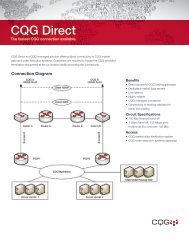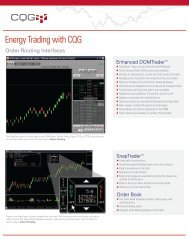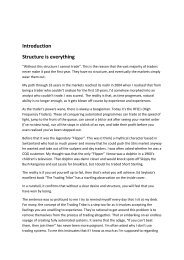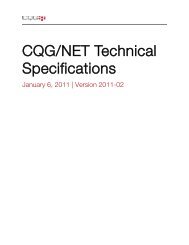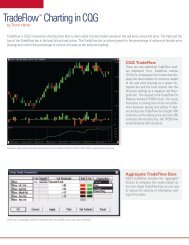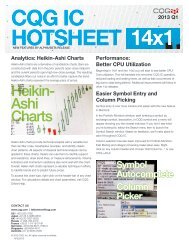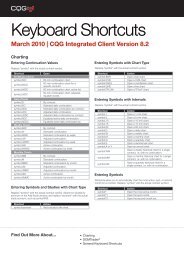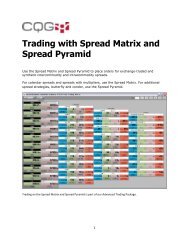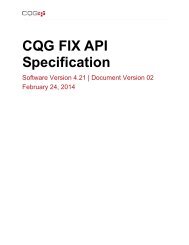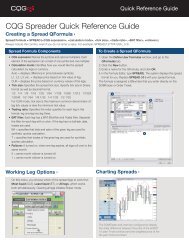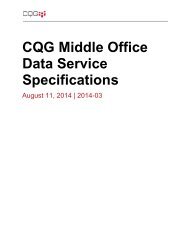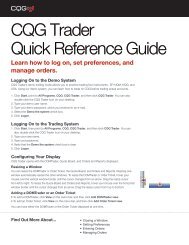Trading Time. - CQG.com
Trading Time. - CQG.com
Trading Time. - CQG.com
You also want an ePaper? Increase the reach of your titles
YUMPU automatically turns print PDFs into web optimized ePapers that Google loves.
Divergence as an entry point<br />
The sets of tables have all used the S&P 500 daily data and been put through various<br />
times in trends. The first (see fig. 22) takes a perfect scenario for buying stocks by<br />
analyzing the period between 1995 and 2000. It would have been difficult not to win.<br />
However, the code still has to be good enough to capture corrections as it is trying to buy<br />
weakness. In such a rally previous aborted divergence code-building attempts simply<br />
missed too many opportunities. Whilst the percentage profits are obviously good, there<br />
are two key points of interest. First there is the high accuracy figures nudging into the<br />
60% area (after 45 bars) and above. Second, and more important, is the trade count. A<br />
trade count of 680 trades over a 5 year period of 500 stocks means that signals only<br />
average just over one trade every 5 years per stock. Obviously on futures markets this is<br />
pointless but it be<strong>com</strong>es a necessity if you are trading a portfolio of stocks or a basket of<br />
currencies on multiple timeframes with such long holding periods. It suggests that a<br />
portfolio of up to 5,000 stocks could be monitored and the trade count would still be<br />
manageable, as trades would average approximately 5 per day. For big players liquidity<br />
must also be considered when picking stocks for the portfolio so the number of trades per<br />
day would decrease further. Closer examination of the actual individual trades reveals a<br />
much different picture. Signals appear in clusters, which is highly revealing, as even if<br />
the portfolio were not actually traded, it would provide a key timing-point of when stock<br />
markets should reverse. This is extremely useful information and is particularly poignant<br />
if linked to true measure of overbought and oversold discussed in chapter 5.<br />
Signal Evaluation S&P 500 1995 to 2000



